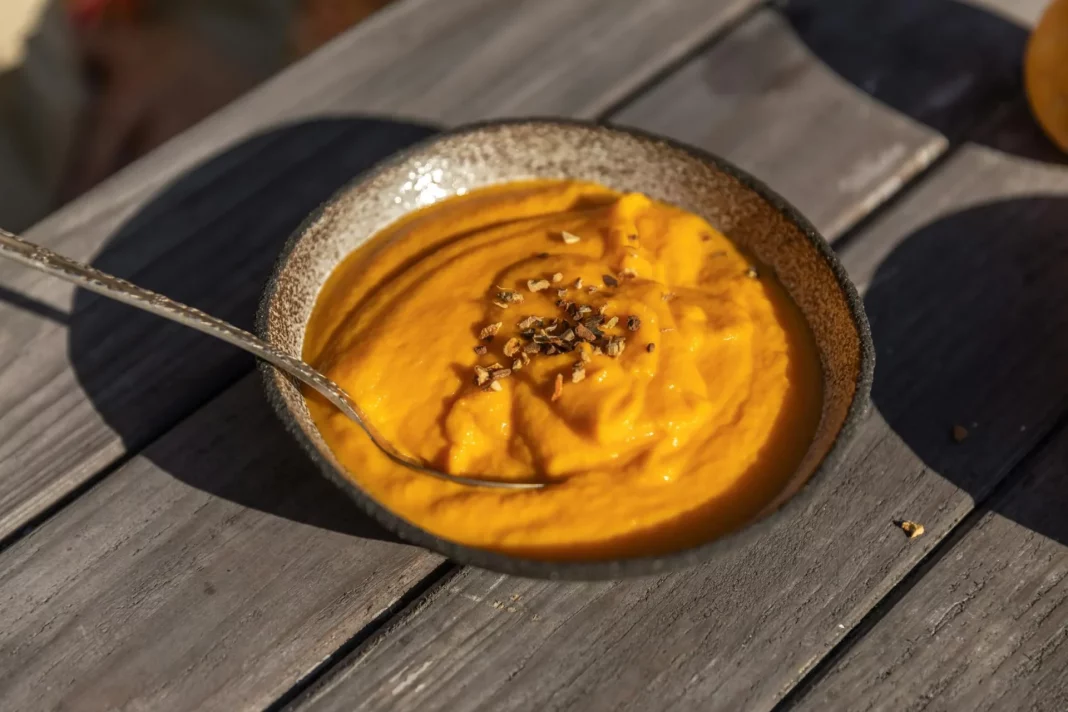Soup has never really been for me. Being Indian, that might be unsurprising (and no, before you think it, curry is not a soup!). The geniuses behind the perfectly crisp bhindi and expertly rolled tandoori naan haven’t any worthy rival to the great umami-rich broths of Japanese ramen, the tangy sourness of a Barbie-pink borscht, the warm nuttiness of a bowl of egusi, or the subtle freshness of a chilled gazpacho, served straight from horseback off the Andalusian mountains. Sure, cultured gastronomic travellers will have noticed the Indian-inspired curried carrot and turmeric soup-concoction hidden within the ever-expanding jungle that is the M&S world food aisle, but we all know that 600g plastic-tub-contained monstrosity costs a much bigger portion of an already dwindling seventh-week Oxford budget than it’s worth.
Growing up, my mother would routinely turn to soup as a fill-in dinner, a last resort dish to prepare when all else failed. Pull out any obscure-looking vegetable from the depths of our fridge drawer, chuck it in a pot with a little water and somehow, bingo, we have ourselves dinner. In an Asian household where we let nothing (literally) go to waste, this can be a health experiment as much as a cooking disaster.
So, it’s no surprise that soup has always seemed so foreign, so uninspiring. The bold bright flavours of my homeland don’t come to mind, just a bowl of bland vegetables blitzed to within an inch of their life, dotted with a few sinking boats of soggy bread. But perhaps I was wrong. Maybe this global gastronomic phenomenon didn’t simply bypass an entire subcontinent. Maybe soup could be more than a mere phantom of a buried high school nightmare, a ploy by my mother to get me to eat more veg. Maybe, just maybe, it could be something for me too.
It turns out the history of soup is actually quite complex. As an Oxford student used to overcomplications, I was hoping the origins of such a basic staple would be a little easier to pin down. The first soup was likely consumed sometime around 20,000 BC, when the oldest soup bowl found in Xianrendong Cave, China was dated to.
In India, soup is perhaps just as historic. Even with the average cavemen’s digestive preferences long eradicated, some soup-resembling dishes remain within the diet of modern 21st century Bombayites. Unlike mulligatawny, which leaves nothing but the bitter aftertaste of postcolonialism in my mouth, dhal, or dahl, has strong ties to the Indian state. I still remember every Monday when I came back from school and my mother would open the door to the welcoming aroma of tarka dhal (which we rather creatively called yellow dhal due to its distinct turmeric-enhanced colour). This ritual felt like nothing other than a warm hug.
So perhaps my original thought was wrong. Perhaps India has great soups, but I simply haven’t been regarding them as such. I need to detangle the idea of soup and Western oppression, and return the autonomy of the dish to itself, a blank canvas available for individual expression. Because maybe soup is for me as maybe, soup is for everyone: a saucy dish that floods over the oceans that divide us. It can be something more than just a vague reminder of a colonial past and blandening of taste buds, an anglicised mockery of a subcontinent’s culinary prowess.
Because soup doesn’t have to be purely leeks, carrot, celery and potato. It can be beans, chilli, coconut and galangal. Lemongrass, shiso, za’atar and pinda. So, as I slurp down this £3 roasted tomato Tesco meal deal soup, (£2.50 with a Clubcard) my thoughts aren’t with the five-year-old children I normally associate with such food. No, I think of the fiery plains of eastern Rajasthan, the smokiness of coal roasted jeera in a Kadai pan, and the creators of a warm, comforting dish full of love, compassion, unity and humility.


